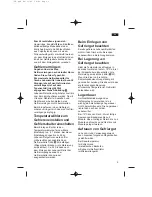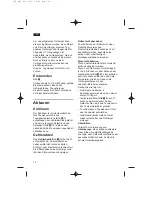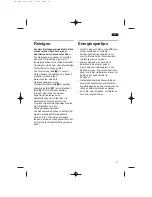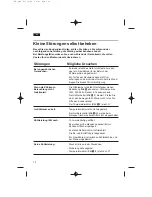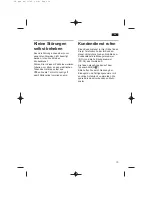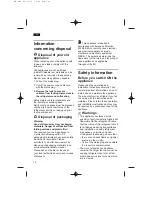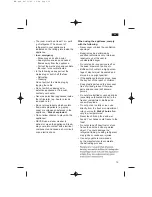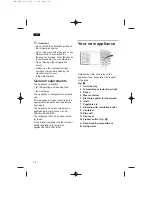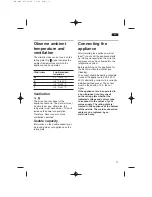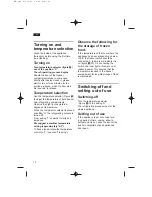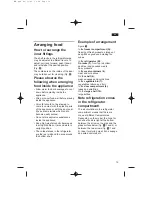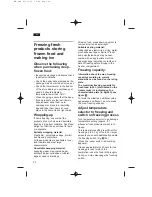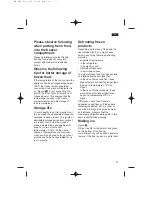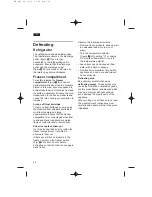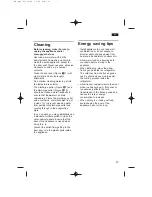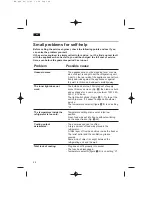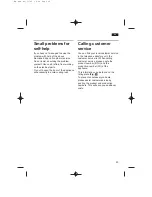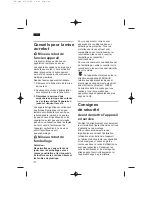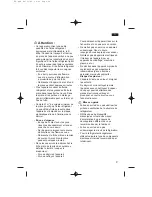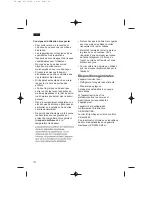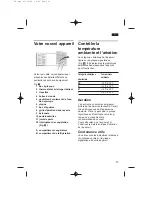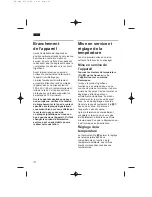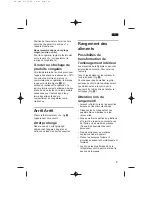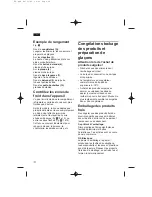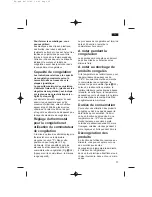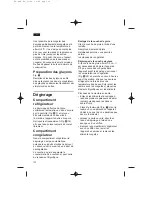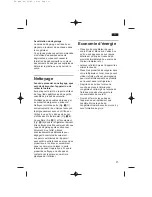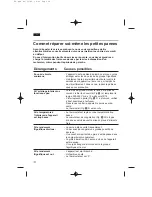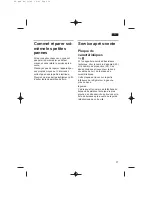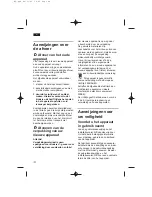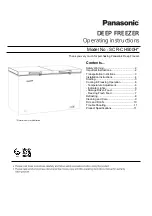
23
en
Cleaning
Before cleaning, make it a rule to
unplug the appliance and/or
disengage the fuse
Use luke-warm water with a little
desinfectant and washing-up liquid to
clean the entire appliance, except for
the door seal. Never use sand, abrasive
cleansers or acids, e.g. chemical
solvents.
Clean the door seal (Figure
Q
/11) with
clear water and dry thoroughly
afterwards.
Do not allow cleaning water to get into
the temperature selector.
The discharge gutter (Figure
I
/7) and
the discharge outlet (Figure
I
/19)
should be cleaned more frequently to
ensure that thawwater can drain
unhindered. Pierce the discharge outlet
with a toothpick or similar object to get
it clean. Try to prevent cleaning water
from getting into discharge outlet and
running through to the evaporating
plate.
In you so wish, you may additionally use
a standard furniture polish to clean the
outer cabinet panels. Ensure that the
door of the appliance is closed while
doing this, to
prevent the polish from getting to the
door seal or to the plastic parts inside
the appliance.
Energy saving tips
• Install appliance in a cool and well
ventilated room, do not expose to
direct sunlight and keep away from
heat sources (radiators, cookers etc.).
• Allow warm food and beverages to
cool down before storing in the
appliance.
• When defrosting, place the deep-
frozen goods inside the refrigerator.
The cold loss from the frozen goods
can be effectively used-up to assist
the cooling process inside the
refrigerator.
• Allow freezer compartment to thaw out
when ice has built-up. A thick coat of
ice adversely affects the cold
transmission to the frozen goods and
causes the rate of energy
consumption to increase.
• When putting in or taking out food,
avoid keeping the door of the
appliance open for too long.
EN.qxd 02/11/05 12:04 Page 23

